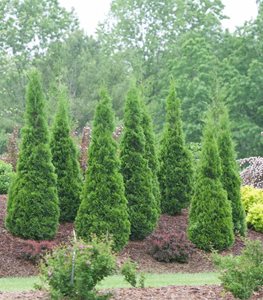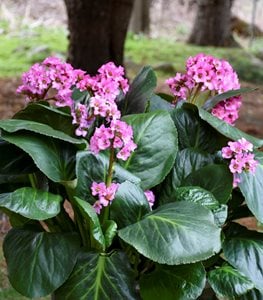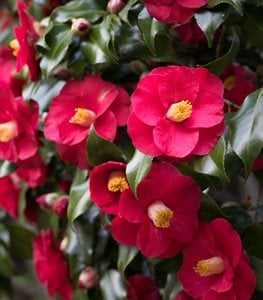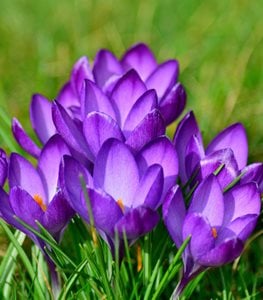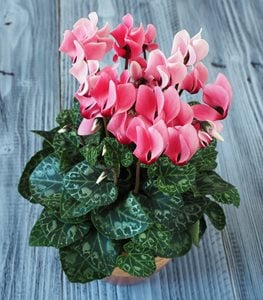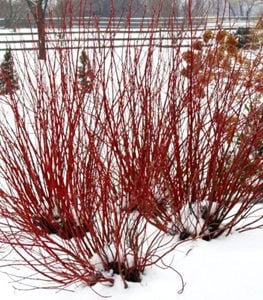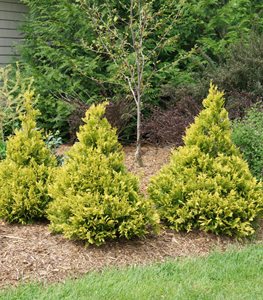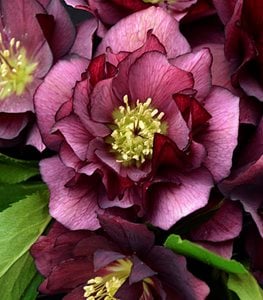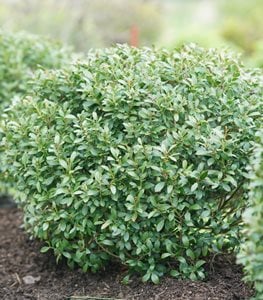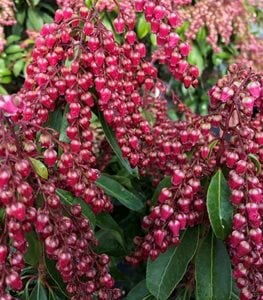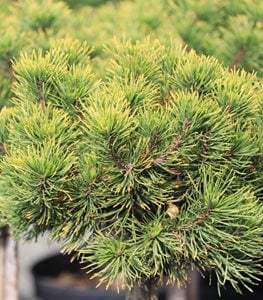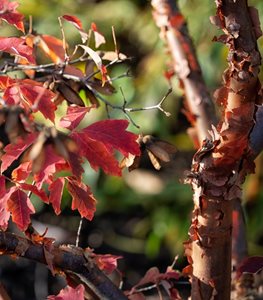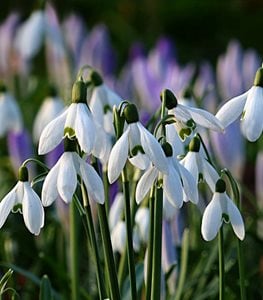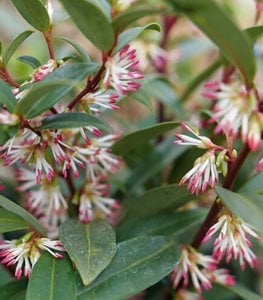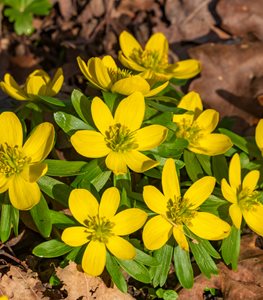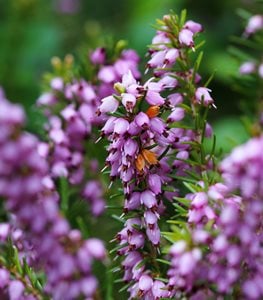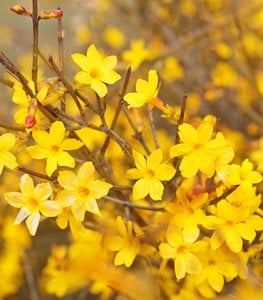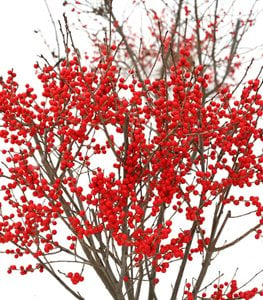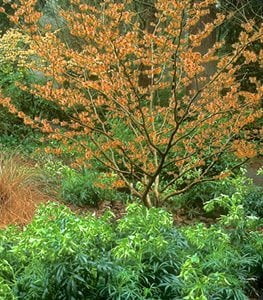20 Winter Plants for Your Garden
Brighten up your landscape with plants that shine during the coldest time of yearWinter is the time of year when avid gardeners long for their gardens and dream of spring. But you don’t have to wait until spring to enjoy your yard. Some plants actually look their best during the cold, dark months of winter.
When choosing plants for winter interest, colorful flowers are not the only ornamental attribute to consider. Look for varieties with interesting structure, evergreen foliage, attractive bark, colored stems, berries, or fragrance.
In cold weather climates, choose cultivars that are hardy enough to survive long, cold winters. Add trees and shrubs such as witch hazel, red twig dogwood, and evergreen conifers for height and structure that will look good even under a blanket of snow. Don’t forget early bulbs such as snowdrops and crocus that will peek through as the snow melts away to let you know that spring is not far away.
Those who live in milder regions that receive little or no snow will have more options to choose from. Here are some of the best winter plants for your landscape.
WINTER PLANTS
ARBORVITAE North Pole® (Thuja occidentalis)
Zones: 3-8
Exposure: Full sun to partial shade
Habit: Upright columnar habit
Height/Spread: 10 to 15 feet tall, 3 to 5 feet wide
Bloom time: Grown for foliage
This versatile evergreen conifer has a narrow columnar structure that is suitable for narrow side yards and other small spaces. Soft textured foliage holds its rich green coloring year-round, and is resistant to winter burn. Plant in a row as privacy screening along a property line, or use to divide garden rooms. Learn more about growing arbovitae.
Pictured: North Pole® arborvitae from Proven Winners.
BERGENIA (Bergenia spp.)
Zones: 3-9
Exposure: Part sun to shade
Habit: Mounding spreading habit
Height/Spread: 1 to 2 feet tall and wide
Bloom time: Late winter to early spring
Also known as pigsqueak, the thick cabbage-like foliage remains evergreen in most regions. Some varieties develop rich red or burgundy leaf coloring in winter. Bell-shaped flowers appear on sturdy upright stems from late winter to early spring in colors of white, pink or magenta. Use this low-growing herbaceous perennial in shade borders, rockeries, or as pathway edging. Learn more about growing bergenia.
Pictured: 'Miss Piggy' bergenia from Proven Winners.
CAMELLIA (Camellia spp.)
Zones: 7-10
Exposure: Dappled sun or partial shade
Habit: Upright bushy habit
Height/Spread: 2 to 20 feet tall and wide, depending on the variety
Bloom time: Fall to mid-spring, depending on the variety
Camellia is one of the showiest winter-flowering plants, with elegant multi-petaled flowers and shiny green foliage that lends year-round color in the landscape. Blooms occur in shades of white, pink, or red, in single or double forms. Use this broadleaf evergreen shrub in a woodland landscape, foundation planting, or shrub border. Learn more about growing camellias.
CROCUS (Crocus spp.)
Zones: 3-8
Exposure: Full sun to partial shade
Habit: Upright spreading habit
Height/Spread: 3 to 6 inches tall and wide
Bloom time: Fall to spring
Crocus flowers are a quintessential sign of spring, though some species will bloom in fall or winter. Small cup-shaped flowers come in a range of colors, from white to deep purple. Naturalize crocus underneath witch hazel or paperbark maple, or in a woodland setting in combination with snowdrops and other early bulbs. Crocus bulbs need an extended period of chilling in order to bloom, so plant bulbs in the fall. Learn more about how to grow crocus.
HARDY CYCLAMEN (Cyclamen coum and spp.)
Zones: 4-9
Exposure: Partial sun to full shade
Habit: Low ground-cover habit
Height/Spread: 3 to 6 inches tall, 4 to 12 inches wide
Bloom time: Fall to early spring, depending on the variety
Though Persian cyclamen (Cyclamen persicum) is commonly grown as a houseplant, hardy cyclamen species can survive outdoors year-round. This bulbous plant grown from small corms goes dormant in summer. Foliage occurs in green or variegated patterns, with white or pink flowers occurring from fall into early spring, depending on the variety. Naturalize in a woodland border, rock garden, or plant in containers. Learn more about how to grow cyclamen.
RED OSIER DOGWOOD Arctic Fire® (Cornus sericea syn. C. stolonifera)
Zones: 2-7
Exposure: Full sun to partial sun
Habit: Upright compact habit
Height/Spread: 3 to 5 feet tall and wide
Bloom time: Spring
Red twig dogwoods have multi-seasonal interest, but it’s in winter that this deciduous shrub really shines. The upright branches turn brilliant red, orange, coral, or yellow during colder months, lighting up the winter landscape. Arctic Fire® red osier dogwood has brilliant red stems and a compact habit suitable for smaller yards. Grow in a winter garden or foundation planting. The colored stems can be cut for holiday decor. Learn more about growing red osier dogwood.
Pictured: Arctic Fire® Red red-osier dogwood from Proven Winners.
FALSE CYPRESS Soft Serve® Gold (Chamaecyparis pisifera)
Zones: 4-8
Exposure: Full sun to partial shade
Habit: Upright pyramidal habit
Height/Spread: 6 to 10 feet tall and wide
Bloom time: Grown for the foliage
The golden foliage of Soft Serve® false cypress brightens up the winter landscape, while the pyramidal shape provides interesting structure. This virtually maintenance-free conifer adds year-round color to mixed borders and foundation plantings. Combine with red twig dogwood, witch hazel, and early-flowering bulbs for compelling contrast. Learn more about how to grow false cypress.
Pictured: Soft Serve® Gold false cypress from Proven Winners.
HELLEBORE (Helleborus spp.)
Zones: 4-9
Exposure: Full sun to partial shade
Habit: Upright spreading habit
Height/Spread: 1 to 4 feet tall, 1 to 3 feet wide
Bloom time: Winter to spring
Hellebore is one of the most favorite winter flowers, with cup-shaped blooms in a wide range of colors and patterns. The attractive deeply lobed foliage remains evergreen in most growing zones for multi-seasonal appeal. Mass along a rock wall or slope where the downward-facing blooms can be enjoyed up close, or naturalize in a woodland border. Learn more about growing hellebores.
Pictured: Wedding Party® True Love hellebore from Proven Winners.
INKBERRY HOLLY Strongbox® (Ilex glabra)
Zones: 5-9
Exposure: Full sun to partial shade
Habit: Low mounding habit
Height/Spread: 2 to 3 feet tall and wide
Bloom time: Spring
Inkberry holly (Ilex glabra) is a broadleaf evergreen shrub that produces small oval green leaves, creating year-round structure and fine texture in the landscape. Plants are resistant to winter damage, making this a good substitute for boxwood in colder climates. Use to edge pathways, as low hedging, in mass plantings or shrub borders. Learn more about growing holly.
Pictured: Strongbox® inkberry holly from Proven Winners.
JAPANESE PIERIS (Pieris japonica)
Zones: 4-8
Exposure: Dappled sun to partial shade
Habit: Upright bushy habit
Height/Spread: 3 to 12 feet tall, 3 to 8 feet wide, depending on variety
Bloom time: Late winter to early spring
Also known as andromeda, this broadleaf evergreen shrub has green or variegated foliage, bronze-red new growth, and cascading clusters of fragrant white or pink bell-shaped flowers in late winter and early spring. Use this slow-growing Japanese native in shrub borders, foundation plantings, and woodland settings for year-round appeal. Dwarf varieties are suitable for containers and small spaces. Learn more about growing Japanese pieris.
Pictured: Interstella® Japanese pieris from Proven Winners.
MUGO PINE 'Carsten's Wintergold' (Pinus mugo 'Carsten's Wintergold')
Zones: 2-7
Exposure: Full sun
Habit: Dwarf mounding habit
Height/Spread: 1 to 2 feet tall and wide
Bloom time: Grown for foliage
Pinus mugo ‘Carsten’s Wintergold’ is a dwarf evergreen conifer with long green needles that turn brilliant gold in colder temperatures to brighten up the winter landscape. Also known as dwarf mountain pine, this slow grower is suitable for small spaces, containers, mass plantings, and rock gardens.
PAPERBARK MAPLE (Acer griseum)
Zones: 3-9
Exposure: Full sun to partial shade
Habit: Upright open habit
Height/Spread: 20 to 30 feet tall, 15 to 25 feet wide
Bloom time: Spring
Paperbark maple is an ornamental shade tree with an elegant spreading canopy and peeling cinnamon-red bark that creates winter interest in the landscape. Lobed blue-green foliage turns brilliant orange-red in fall. Use this small deciduous tree as a focal point in a mixed border or winter landscape. Underplant with small early bulbs such as snowdrop, crocus, and cyclamen.
SNOWDROPS (Galanthus spp.)
Zones: 3-9
Exposure: Full sun to partial shade
Habit: Upright spreading habit
Height/Spread: 4 to 12 inches tall, 3 to 6 inches wide
Bloom time: Fall to early spring, depending on the species
The delicate flowers of snowdrops are a quintessential sign that spring is not far away. This petite perennial bulb produces snowy white single or double blooms with wing-like petals, some with green or gold markings. Mass snowdrops in a woodland border, rock garden, or winter landscape underneath deciduous trees and shrubs where they will naturalize to form colonies. Learn more about growing snowdrops.
SWEET BOX (Sarcococca hookerinana var. humilis)
Zones: 6-9
Exposure: Partial sun to full shade
Habit: Upright bushy habit
Height/Spread: 1 to 6 feet tall, 2 to 6 feet wide
Bloom time: Mid-winter to early spring
For winter fragrance, few plants rival the intensely scented flowers of sweet box. This broadleaf evergreen shrub produces clusters of white ribbon-like flowers from mid-winter to early spring, which are followed by shiny red or black berries. Glossy dark green foliage remains attractive year-round. Plant this carefree shrub near a home entrance where the intoxicating sweet scent can be most enjoyed. Use in foundation plantings or as hedging. Sweet box is tolerant of dry shade.
Pictured: Sweet & Lo™ sweet box from Proven Winners.
WINTER ACONITE (Eranthis hyemalis)
Zones: 3-7
Exposure: Full sun to partial shade
Habit: Low spreading habit
Height/Spread: 3 to 6 inches tall and wide
Bloom time: Late winter to early spring
Winter aconite (Eranthis hyemalis) is a hardy bulbous perennial with small oval leaves and cheerful yellow cup-shaped flowers that resemble buttercups. This tough ground cover emerges before early crocus, often pushing through snow cover. Naturalize this woodland European native underneath deciduous trees and shrubs such as winter-blooming viburnum, witch hazel, or paperbark maple. Plants go dormant in late spring.
WINTER HEATH (Erica carnea)
Zones: 5-8
Exposure: Full sun to partial shade
Habit: Upright spreading habit
Height/Spread: 4 to 12 inches tall, 1 to 2 feet wide
Bloom time: Mid-winter to early spring
This broadleaf evergreen shrub produces dense clusters of bell-shaped flowers along the branches in shades of white, pink, or lavender. Plants are low growing, and will spread to form a dense carpet. The needle-like foliage remains attractive year-round. Naturalize in a rock garden, winter landscape, or mixed border.
WINTER JASMINE (Jasmine nudiflorum)
Zones: 6-10
Exposure: Full sun to partial shade
Habit: Vining or spreading habit
Height/Spread: 4 to 15 feet tall, 3 to 6 feet wide
Bloom time: Late winter to early spring
Winter jasmine (Jasminum nudiflorum) is a deciduous shrub with a sprawling or vining habit, thin willowy stems, and bright yellow star-shaped flowers that appear in late winter. Plants will grow up to 4 feet tall when grown as a shrub, or up to 15 feet tall when trained as a vine on a vertical support. Though the flowers are not fragrant like many other jasmines, the cheerful winter display makes up for this. Add winter jasmine to a courtyard, or mass along a slope where it can be allowed to cascade.
WINTERBERRY HOLLY Berry Poppins® (Ilex verticillata)
Zones: 3-9
Exposure: Full sun to partial shade
Habit: Upright bushy habit
Height/Spread: 3 to 4 feet tall and wide
Bloom time: Late spring to early summer
This hardy deciduous shrub is grown primarily for the bright red berries that light up the winter landscape. The dwarf habit of Berry Poppins® is suitable for small spaces and urban yards. Female plants need a male pollinator such as Mr. Poppins® to develop the showy red berries. Male plants do not produce fruit. Plant in a mixed border, winter landscape, or use as hedging. Learn more on growing holly bushes.
Pictured: Berry Poppins® winterberry holly from Proven Winners.
WITCH HAZEL (Hamamelis spp.)
Zones: 3-9
Exposure: Full sun to partial shade
Habit: Uprignt spreading or vase-shaped habit
Height/Spread: 10 to 20 feet tall and wide
Bloom time: Fall to early spring, depending on the species
Witch hazel (Hamamelis) is one of the best winter-blooming plants, thriving in most growing zones. This medium-sized deciduous shrub or small tree produces spidery ribbon-like flowers from fall to early spring, depending on the species. Some varieties are fragrant, with flowers occurring in shades of red, orange, gold, or yellow. The serrated green leaves turn brilliant shades of yellow, orange, or red in fall. Plant in a woodland border alongside hellebores and early bulbs. Learn more on growing witch hazel.
RELATED:
16 Winter Flowers for Your Garden
How to Create Winter Interest in the Garden
